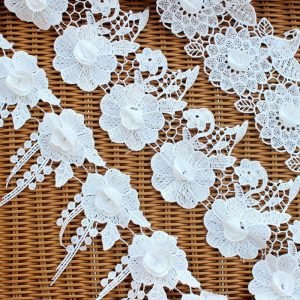Embroidery, an age-old craft of decorating fabric with needle and thread, has evolved dramatically through history. From ancient civilizations to contemporary art, embroidery reflects cultural identity, social status, and artistic expression. This article delves into the fascinating development of embroidery, highlighting its origins, techniques, and modern significance.


Origins of Embroidery
The origins of embroidery date back to prehistoric times, with the earliest examples found on artifacts from ancient Egypt and China, dating as far as 3000 BC. Early forms of embroidery involved simple stitches used to reinforce seams or embellish clothing with basic geometric patterns. As civilizations progressed, so did the complexity and artistry of embroidery.


Cultural Significance
Throughout history, embroidery has held significant cultural meaning. In various cultures, it has been used to convey stories, signify social status, or mark important events. For instance, in medieval Europe, embroidered tapestries adorned castles, depicting historical battles and religious scenes, while in Asia, intricate silk embroidery often represented auspicious symbols.


Techniques and Styles
As embroidery techniques developed, different styles emerged across regions.
In Asia, techniques like sashiko in Japan and kantha in India reflect regional aesthetics and traditions, each telling unique stories through stitches.


The Industrial Revolution
The Industrial Revolution in the 19th century transformed embroidery with the advent of mechanization. While hand embroidery remained a cherished skill, machine-made embroidery became widely available, making decorative textiles more affordable. This shift allowed for mass production, changing the landscape of fashion and home decor.


Modern Embroidery
Today, embroidery continues to thrive as both a craft and an art form. Contemporary artists explore innovative techniques, blending traditional methods with modern design. Machine embroidery and digital technologies have opened new avenues for creativity, enabling intricate patterns and customization in fashion and home textiles.
Additionally, the revival of interest in handmade crafts has led to a resurgence in traditional embroidery techniques. Workshops and online communities foster a new generation of embroiderers, emphasizing sustainability and individuality in their work.


Conclusion
The development of embroidery is a testament to human creativity and cultural expression. From its ancient origins to its modern iterations, embroidery remains a vibrant and evolving art form. As we delve into its rich history, we recognize the enduring impact of this craft, which continues to unite people across cultures and generations through the simple act of stitching.

